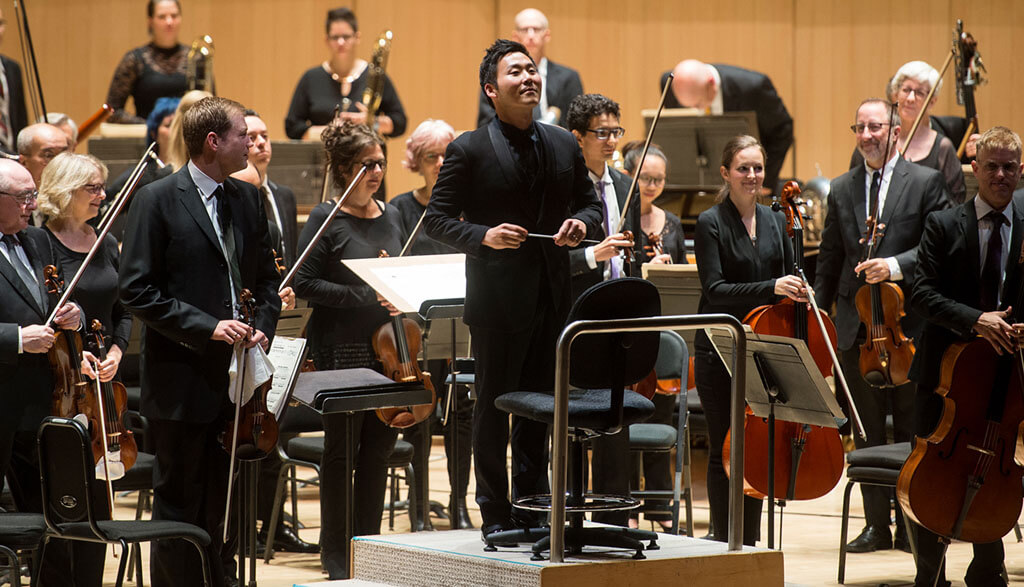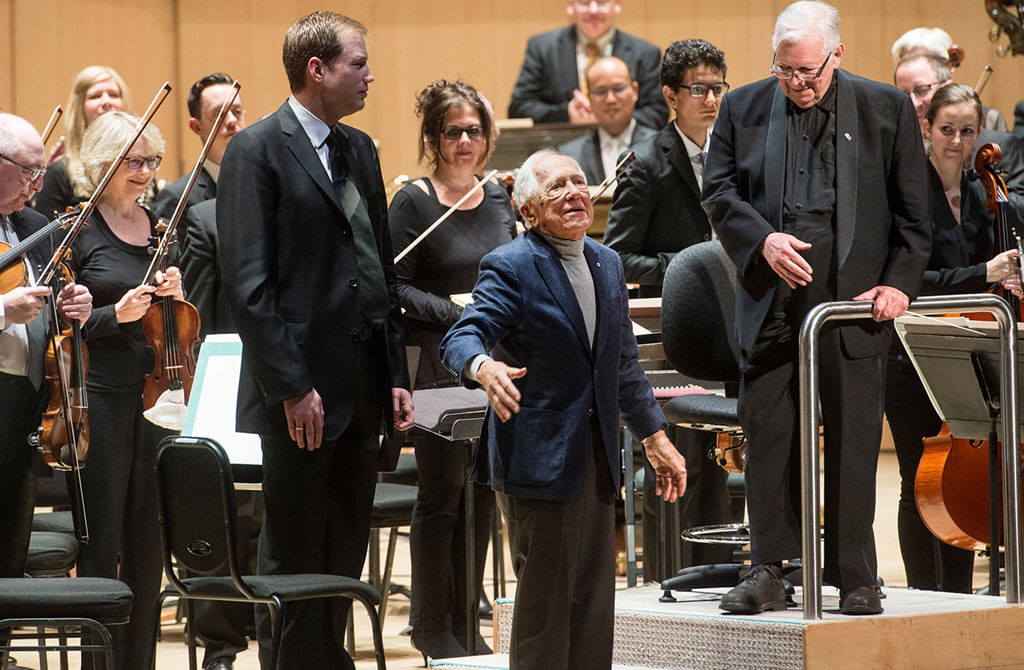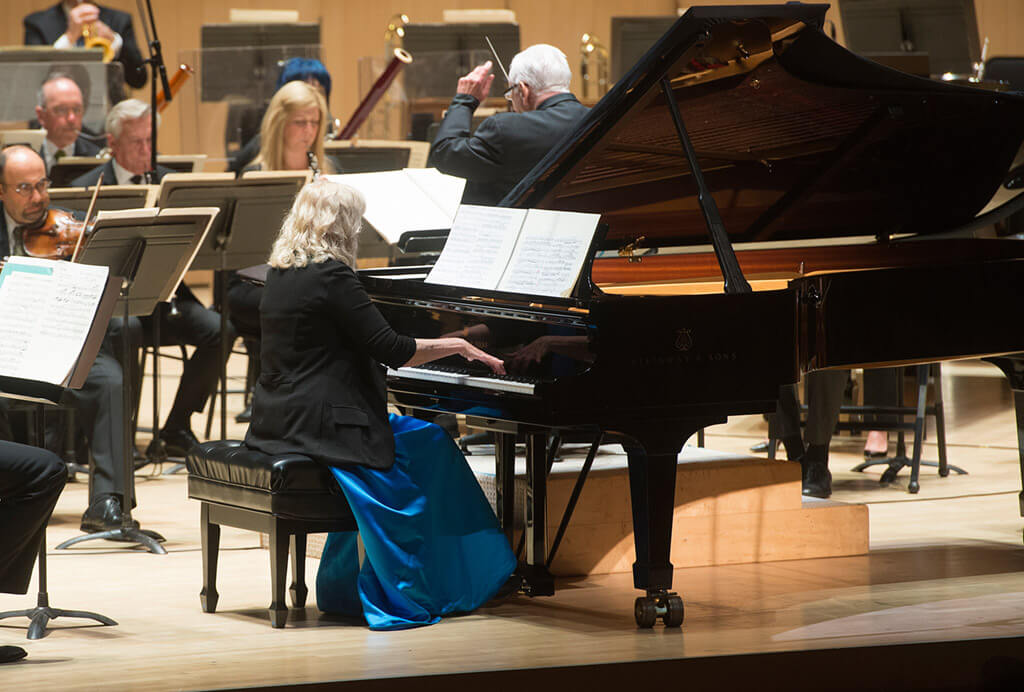
Toronto Symphony Orchestra with conductors Victor Feldbrill and Earl Lee. Christina Petrowska Quilico, piano soloist. Roy Thomson Hall. October 21. Repeats October 23. tso.ca
With Glowing Hearts was the latest in this season’s themed concert programmes offered by the Toronto Symphony Orchestra. As the title suggests, it was meant to be a tribute to all things Canadian. It is, in fact, one of the rare programmes the orchestra has ever devoted entirely to Canadian music. So it’s too bad that it was hard to get enthusiastic about the result.
The first performance at Roy Thomson Hall on Saturday night was sparsely attended, despite the presence of 50 new Canadians, who received their citizenship in the lobby before the concert, their families, and the families and friends of the composers featured on the bill. This spoke volumes about the low profile of Canadian composers in their own country.
It would have been wonderful to write that the program showed us that this is an unfair and unfortunate state of affairs, but, alas, this was not the case. The bulk of the music selected for these two concerts came from the first big flowering of Canadian art music after World War II, enabled by the fledgeling Canada Council, League of Canadian Composers and active commissioning on the part of local orchestras and the Canadian Broadcasting Corporation.

In Toronto, the single biggest force behind crafting a new Canadian sound was composer John Weinzweig (1913-2006), who poo-pooed the older generation, such as Britsh ex-pat Healey Willan. Weinzweig and three of his most successful students, John Beckwith (who is very much still with us at age 90), Harry Somers (1925-1999) and Harry Freedman (1922-2005), each had a piece of music on the program.
Hearing Somers’ Passacaglia and Fugue (from 1954), Freedman’s Tableau for String Orchestra (1952), Beckwith’s Flower Variations and Wheels (1962) and Weinzweig’s Symphonic Ode (1958) revealed how, when stripped of traditional harmonies and melody by the imperatives of Modernism, a work’s coherence relied all the more on its architecture — especially the careful crafting of counterpoint.
All four works are excellent studies in different aspects of counterpoint. Freedman’s Tableau makes excellent use of orchestral strings for mood and texture. The first part of Beckwith’s opus, Flower Variations, was a sunny little rhapsody. But, otherwise, the characteristic that struck me most about these pieces was how they were desperately trying to sound like serious music, lacking even a basic sense of lyricism. Weizweig’s Ode was downright plodding and dreary. It was more like a Sarabande mournfully announcing the end of having a good time at a symphony concert.

Quebec was represented by its granddaddy of composers, Claude Champagne (1891-1965), who wrote a terse, 15-minute, three-movement Piano Concerto in 1948. The soloist was Torontonian Christina Petrowska Quilico, who has built her career on championing Canadian music.
The concerto, emphatically tonal and quite melodramatic, suffered from unevenly and incompletely developed musical ideas that seemed to crash into an invisible stone wall at the end of each movement. The orchestration put the soloist at a disadvantage by having sections of the orchestra double many of the notes being played on the piano, thereby rendering the piano inaudible through vast stretches of the music.
Victor Feldbrill, who is getting frail at the age of 93, did little to shape Champagne’s score. Quilico played the three movements mechanically, adding little phrasing or nuance. The orchestra and piano were out of sync several times during the first movement. The combined effect suggested that this score should go back and stay on the library shelf from whence it came.
That left composer Violet Archer (1913-2000) to show what good Canadian music of the mid-20th century sounded like. Archer, who was educated in Montreal and Europe and spent most of her working life in Alberta, missed out on Weinzweig’s ascetic tyranny. She was a fabulous craftsperson who never ignored the lyrical side of music, and its need to communicate with the ears of any sort of listener. Her masterfully shaped and layered Poem for Orchestra (1940) was the highlight of the evening for me, and it was beautifully conducted by the TSO’s RBC Resident Conductor, Earl Lee.
The evening opened with the Toronto premiere of UP! by Quebec composer Nicolas Gilbert. The 2 minutes allotted to this year’s sesquicentennial co-commissions are truly not enough to express a complete musical idea. UP! built deliberately to the point where something interesting might happen, only to end abruptly when its 120 seconds were up.
It’s too bad I can’t say that Violet Archer’s 11 minutes of great music are worth the rest of this Toronto Symphony program.
#LUDWIGVAN
Want more updates on Toronto-centric classical music news and reviews before anyone else finds out? Follow us on Facebook or Twitter for all the latest.
- Classical Music 101: What Does A Conductor Do? - June 17, 2019
- Classical Music 101 | What Does Period Instrument Mean? - May 6, 2019
- CLASSICAL MUSIC 101 | What Does It Mean To Be In Tune? - April 23, 2019



